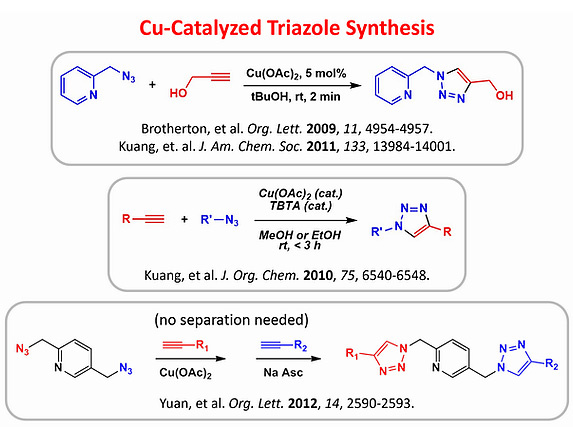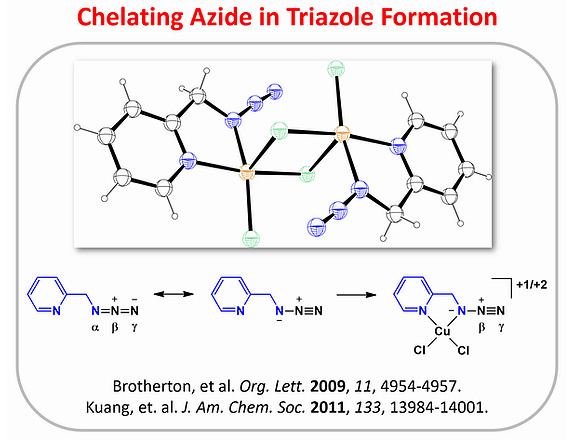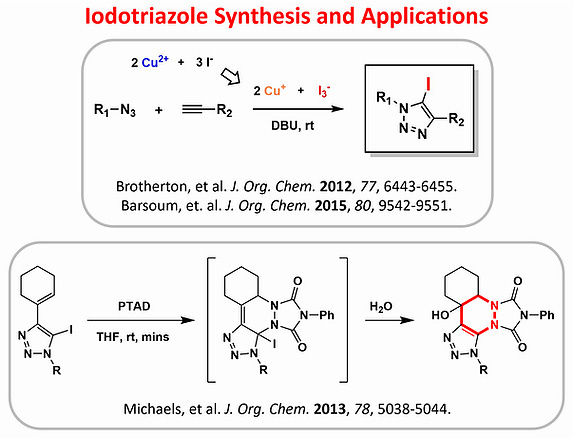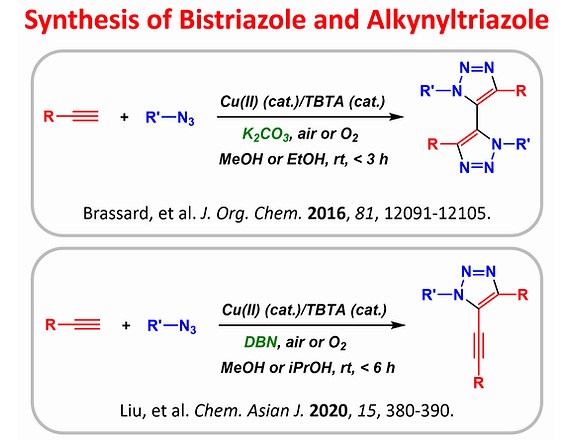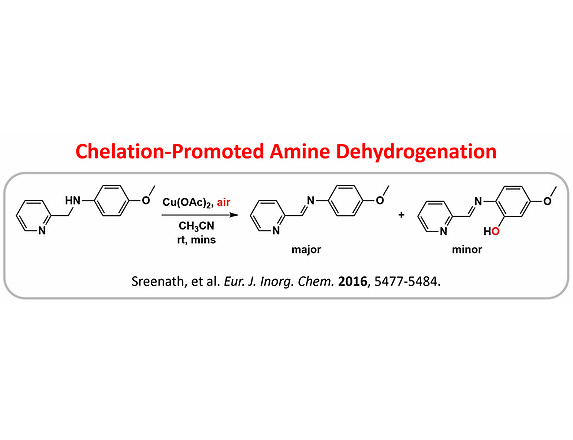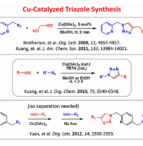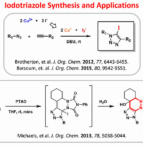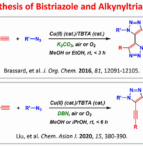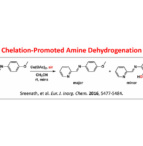The Zhu group is dedicated to exploring fundamental questions in organic chemistry. Through the application of scientific methods to address these challenges, we often make new observations that lead to the development of innovative tools benefiting various scientific fields. Our research primarily focuses on the interconnected areas of physical organic chemistry, supramolecular chemistry, and chemical biology. We have made significant contributions to the understanding of molecular photophysics of organic molecules and the mechanisms of copper-catalyzed reactions. Building on these foundational works, we have successfully created novel fluorescence imaging labels, methods, and catalytic processes. In the following sections, we provide a brief overview of several current research topics.
Organic Reactions and Mechanisms
Our interest in the mechanistic aspects of copper-mediated coupling reactions arose when we made the discovery that copper(II) acetate and chelating azide exhibit unique reactivities in copper(II)-mediated azide-alkyne “click” cycloaddition reactions. The coordination of a chelating azide, like 2-picolylazide, with copper(II) not only enhances the electrophilicity of the azido group but also extends the longevity of the copper catalyst by preventing aggregation. Additionally, copper(II) acetate serves as an efficient dinuclear scaffold, facilitating both the inductive oxidative homocoupling of alkynes and the azide-alkyne cycloaddition. Building on the mechanistic understanding gained from this initial work, we have developed several methods to synthesize triazole variants, which have found applications among an increasing number of researchers.
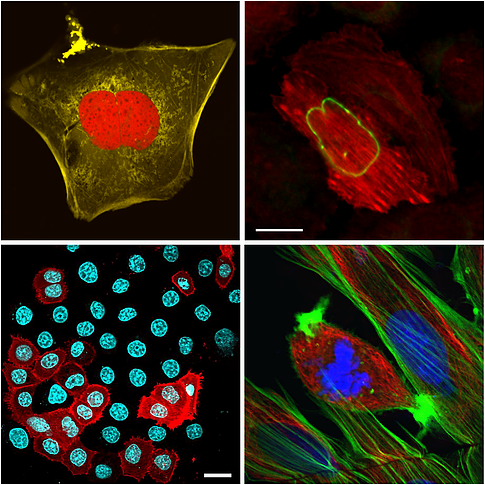
Organic Fluorescent Dyes in Microscopy
Our group has conducted research on organic fluorophores exhibiting zinc(II)-sensitive fluorescence properties. These compounds serve as fluorescent labels for imaging zinc(II) in living cells, utilizing various fluorescence-based microscopic methods. We have successfully developed a fluorescent heteroditopic ligand platform, which displays fluorescence response specifically to the presence of zinc(II) across a wide concentration range. This distinguishing characteristic sets zinc(II) apart from other biologically interesting and physiologically important small molecules and ions. Additionally, we have incorporated 1,2,3-triazole into new ligands for metal ions, some of which, upon integration with a fluorophore, function as zinc(II)-sensitive indicators.
Expanding this project, we aim to include fluorescent molecules for imaging other intracellular metabolic and signaling molecules. Students participating in this project will acquire a diverse range of skills in both chemistry and biology, encompassing synthesis, photophysical characterization of light-emitting compounds, coordination chemistry, cell culture, and fluorescence microscopy
Multiple Emission Organic Fluorophores
We are interested in organic fluorophores that exhibit efficient emission from multiple excited states. Our research focuses on studying the impact of environmental factors, such as solvent polarity, viscosity, and hydrogen bonding, on the energies and distribution of fluorophore species in both ground and excited states. We investigate how these changes in distribution affect the composite color (mixing of frequencies) and brightness (fluorescence quantum yield) of the fluorophore.
To model these environmental factors, we create polymer matrices that mimic the conditions. By incorporating dyes into these polymers, we can produce energy-efficient light-emitting materials with tunable composite colors. These materials hold great potential for various applications in the field of light emission.

Just Curious…
In some instances, we follow up on interesting (and unexpected) observations from ongoing projects. For example, we conducted a study on the effect of boronic acid binding on the electrochemical oxidation of catechol derivatives, and we reported the characterizations and syntheses of several new metal coordination ligands. Through these investigations, we have generated new knowledge that may or may not have immediate or future benefits for other areas of science or humanity in general. Nonetheless, it is gratifying to know that we have gained a better understanding of the world through our research efforts.

